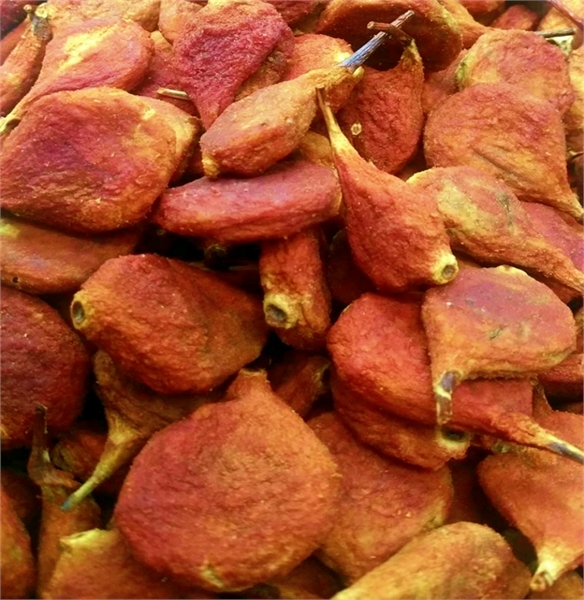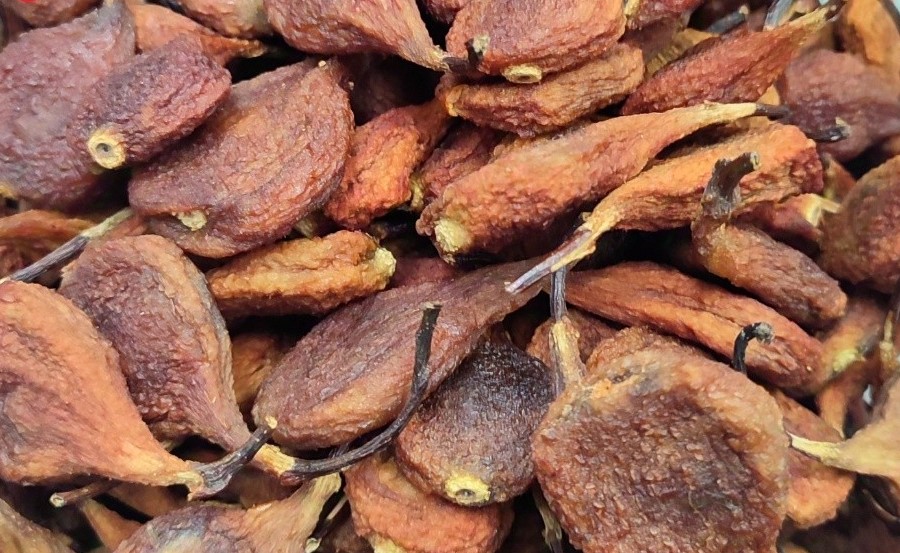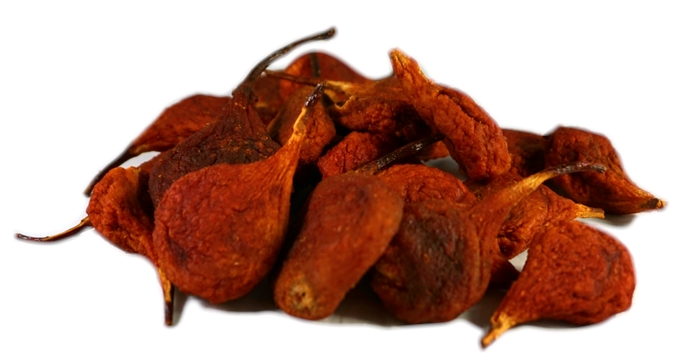The dried pears, also called "little hams" due to their shape and color, are produced in the northern region of Portugal from the São Bartolomeu pear variety.
Arising as a way of preserving the fruit and thus securing food, which in ancient times was more scarce, is an art that has been lost over the years, only remaining a few of producers who still practice it.
Today is part of a gastronomic heritage that we do not want to see disappear, so we go far to bring these fantastic Dried Pears, pleasing many customers, so that you can continue to appreciate what is best done in Portugal.
The sale is made by the weight, taking only what you want. Enjoy!
curiosity
HOW ARE THEY MADE?
They are harvested in the last weeks of August, when they are ripe and there is enough sun to dry them. The pickup is manual: a man climbs the trees and shakes the branches, dropping the pears on the ground; below, the women collect them and put them in boxes.
Then they are arranged in "walkways," a sort of long decks covered with a thick layer of pine caruma, called "tarimbas". Care should be taken not to leave pears overlapping. This first phase of drying lasts 4 or 5 days. In the middle of time the pears were seen one by one, to catch sunshine equally on both sides.
When the pears are dry, they ared removed from the wand and "sew" themselves, that is, they are placed in plastic sacks that are left in the sun for 2 or 3 hours. The heat and moisture soften the flesh of the pears, making the following process easier: on the spine.
This operation is done with scaffolding, utensils consisting of two pieces of wood hinged by a piece of leather or rubber. The pears are spread one by one, very carefully, because if the skin pops the fruit becomes unusable.
Finally, they lay again in the sun, for 1 or 2 days, on white sheets. At this stage the pears no longer need to be so far apart. After drying, they can be bagged. For good storage, they should be kept away from moisture.
Text from memoriamedia.net




